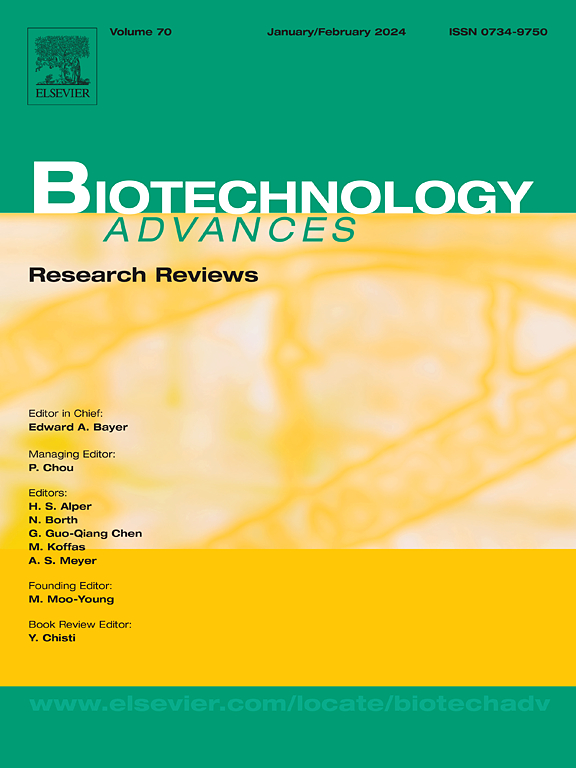Morphology engineering facilitates constructing efficient cell factories
IF 12.5
1区 工程技术
Q1 BIOTECHNOLOGY & APPLIED MICROBIOLOGY
引用次数: 0
Abstract
The utilization of microbial cell factories for industrial chemical production from renewable feedstocks provides a promising strategy for achieving sustainable biomanufacturing. However, cellular morphology significantly affects the efficacy of microbial cells as production platforms. Morphology engineering aims to “harnessing production through morphology” by reprogramming cellular architecture across multiple scales, thereby unlocking cellular potential to develop high-performance microbial cell factories. This review summarizes the mechanisms for maintaining cell morphology in rod-shaped bacteria and yeasts. Subsequently, we analyze current three main applications of morphology engineering in optimizing microbial cell factories. By increasing the length and width of short rod-shaped bacteria, the cell volume is increased to promote the accumulation of intracellular products. By reducing the size of the mycelial globules of actinomycetes, nutrient absorption is promoted to increase the yield of natural products. By increasing the area of yeast organelles and cell membranes, the yield of terpene products is enhanced. Furthermore, the current limitations of morphology engineering and its future development directions are proposed. This provides theoretical frameworks and technical references for promoting the development of morphology engineering.
形态学工程有助于构建高效的细胞工厂。
利用微生物细胞工厂从可再生原料中生产工业化学品为实现可持续生物制造提供了一个有前途的策略。然而,细胞形态显著影响微生物细胞作为生产平台的功效。形态学工程旨在通过在多个尺度上对细胞结构进行重新编程,从而释放细胞潜力,开发高性能的微生物细胞工厂,从而“通过扩大来利用能量产品”。本文综述了杆状细菌和酵母维持细胞形态的机制。随后,我们分析了目前形态学工程在优化微生物细胞工厂中的三种主要应用。通过增加短杆状细菌的长度和宽度,增加细胞体积,促进细胞内产物的积累。通过减小放线菌菌丝球的大小,促进营养吸收,提高天然产物的产量。通过增加酵母细胞器和细胞膜的面积,可以提高萜烯产品的产量。最后,对形态学工程的局限性和未来的发展方向进行了展望。这为推进形态学工程提供了理论框架和技术参考。
本文章由计算机程序翻译,如有差异,请以英文原文为准。
求助全文
约1分钟内获得全文
求助全文
来源期刊

Biotechnology advances
工程技术-生物工程与应用微生物
CiteScore
25.50
自引率
2.50%
发文量
167
审稿时长
37 days
期刊介绍:
Biotechnology Advances is a comprehensive review journal that covers all aspects of the multidisciplinary field of biotechnology. The journal focuses on biotechnology principles and their applications in various industries, agriculture, medicine, environmental concerns, and regulatory issues. It publishes authoritative articles that highlight current developments and future trends in the field of biotechnology. The journal invites submissions of manuscripts that are relevant and appropriate. It targets a wide audience, including scientists, engineers, students, instructors, researchers, practitioners, managers, governments, and other stakeholders in the field. Additionally, special issues are published based on selected presentations from recent relevant conferences in collaboration with the organizations hosting those conferences.
 求助内容:
求助内容: 应助结果提醒方式:
应助结果提醒方式:


